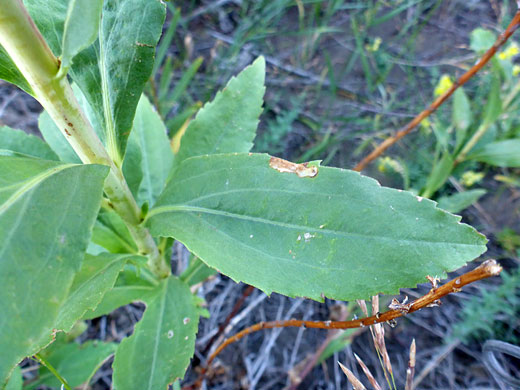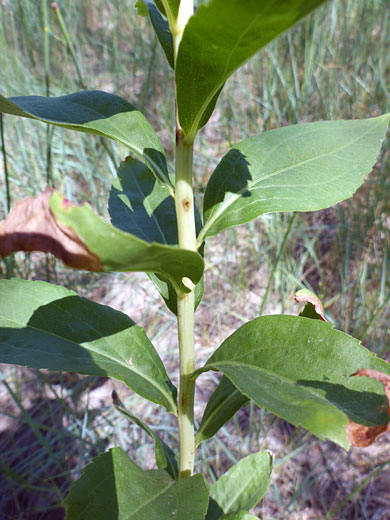Common names:
Giant goldenrod, late goldenrod
Family:
Scientific name:
Solidago gigantea
Main flower color:
Range:
Concentrated in the eastern Rocky Mountains and the Great Plains
Height:
Up to 6 feet
Habitat:
River banks, moist grassland, open woodland; sea level to 6,000 feet
Leaves:
Alternate, sessile, lanceolate, toothed, up to 4 inches long
Season:
August to September
The inflorescence of solidago gigantea is typically large, containing up to 600 small yellow flowerheads in a layered, pyramidal cluster, with some gaps between the component stalks. Flowerheads may be subtended by two small, linear bracts. The yellowish-green phyllaries are in three to four rows, enclosing the short, bell-shaped involucre. Above are between 9 and 15 ray florets around a center of 7 to 12 disc florets.
Phyllaries, leaves and stems are generally hairless, though the veins on the underside of the leaves may be slightly hairy. Stems are light green to greyish in color, or glaucous. Leaves grow only along the stem, and are largest around the middle. They have a midvein, a faint pair of side veins branching at the base, and another pair branching higher up. Leaf edges are lined with sharp teeth.
Phyllaries, leaves and stems are generally hairless, though the veins on the underside of the leaves may be slightly hairy. Stems are light green to greyish in color, or glaucous. Leaves grow only along the stem, and are largest around the middle. They have a midvein, a faint pair of side veins branching at the base, and another pair branching higher up. Leaf edges are lined with sharp teeth.
All Contents © Copyright The American Southwest | Comments and Questions | Contribute | Site Map







